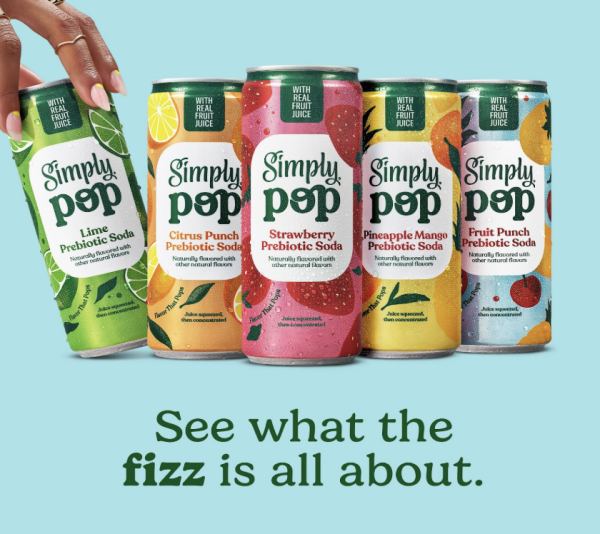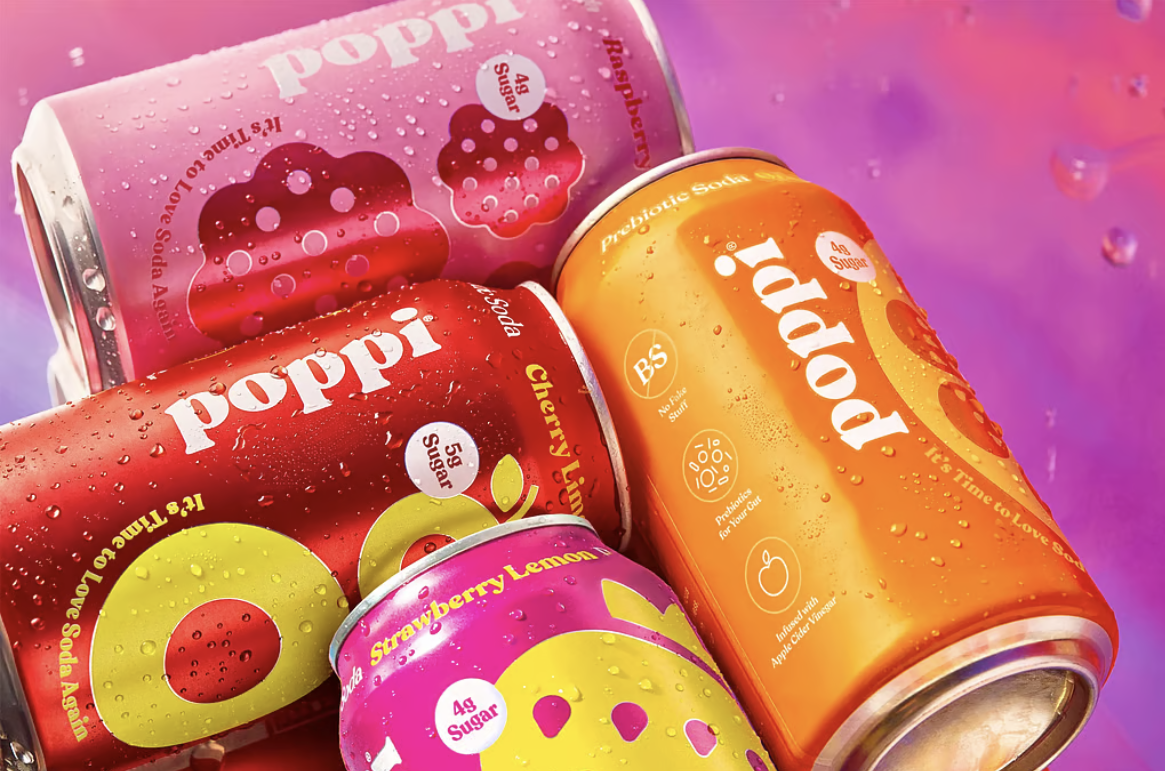In an era of healthy lifestyle choices and the mass growth of the market and commercialization of the clean eating concept, the idea of prebiotics has emerged as a popular concept in many goods and products.
Take the widely popular prebiotic sodas which have been slowly dominating the soda market. Brands such as Olipop and Poppi make up around 2% of the 42.4 billion dollar industry. While that doesn’t seem like a lot, this means that roughly 820 million dollars in sales come from the prebiotic soda market. The market is projected to grow significantly in the coming years with an estimated 7.9% increase with a projected 7.9% from 2024 to 2030. In a race to catch up to leading prebiotic brands, Coca Cola launched Simply Pop,their version of prebiotic soda. This shift in consumers to seek healthy beverage options for their body, drives the demand for the product. This trend is just like how zero sugar and diet coke are slowly dominating traditional sodas. But as the media increasingly leans on the notion of zero sugar being cancerous, many consumers just choose to go with the healthy option with clean ingredients and prebiotics.

Prebiotics aren’t just for soda. Supplements also contain prebiotics.Hyperbiotics Prebiotic Powder is a power mix containing prebiotics. Moreover, Seed DS_01 is a capsule which contains prebiotics that is widely popular.BelliWelli is another consumed snack bar with prebiotics in them.
So what even are prebiotics? Not to be confused with probiotics–are actual bacteria–prebiotics are plant based fibers that help healthy gut bacteria grow. They cannot be digested by the human body and it is claimed that it can help “improve digestion and boost the immune system. Some other benefits say that it can help with constipation, regulate cholesterol, and increase mineral absorption in the body (Brown University)
But the important thing to note as BJ health states, “ Although prebiotic sodas have less sugar and fewer calories than traditional soda, you should know that these beverages alone can’t replace a healthy, well-balanced diet and lifestyle. Adding prebiotic sodas to your daily food and beverage intake won’t fix a diet consisting of sugar, oils, fat and processed foods. Instead, you should eat more fiber, fruits, vegetables, whole grains, nuts, seeds, proteins and healthy fats.” While these products can be a better alternative to drinking sugary sodas or candies, it’s important not to over consume healthier options just because they appear better.
Another side effect is that consuming too much fiber can cause gas and bloating, so people with health conditions such as small intestinal bacterial overgrowth, irritable bowel syndrome, Crohn’s disease and colitis should skip prebiotic foods. In May 2024, Poppi actually got sued for claiming that the gut health benefits were false and misleading. The argument was that consuming 7.5 grams of agave inulin (a prebiotic) daily for three weeks did not result in any meaningful prebiotic benefit. The lawsuit also highlighted the high sugar content of Poppi, arguing that consuming enough cans to achieve the purported gut health benefits could negate any potential health benefits and potentially lead to negative health consequences. Other researchers argue that it would just be more beneficial to consume probiotic products that are natural such as garlic, onions, bananas, Jerusalem artichokes, soybeans, asparagus, wheat, oats, and barley.
So, while more research is needed into the impacts of prebiotics in our ever more health-conscious globe, it becomes important that we be aware when we crack open a can or take a bite of a bar to check if it is really as healthy as it claims..
Works Cited
Brown University Health Blog Team. “The Importance of Prebiotics | Brown University Health.” Brown University Health, Brown , 22 Nov. 2022, www.brownhealth.org/be-well/importance-prebiotics. Accessed 16 Apr. 2025.
Doering, Christopher. “Coca-Cola Enters Trendy Prebiotic Soda Market with Simply Pop.” Food Dive, 18 Feb. 2025, www.fooddive.com/news/coca-cola-enters-trendy-prebiotic-soda-simply-pop/740148/. Accessed 21 Apr. 2025.
ELS, Lisa Catanese. “Prebiotics: Understanding Their Role in Gut Health.” Harvard Health, 15 May 2024, www.health.harvard.edu/nutrition/prebiotics-understanding-their-role-in-gut-health. Accessed 21 Apr. 2025.
“Probiotic and Prebiotic Soda Market Size, Share Report 2030.” Grandviewresearch.com, 2023, www.grandviewresearch.com/industry-analysis/probiotic-prebiotic-soda-market-report.
“What Prebiotics and Probiotics Are, and the Foods That Contain Them.” Www.nebraskamed.com, 13 Apr. 2022, www.nebraskamed.com/gastrointestinal-care/what-prebiotics-and-probiotics-are-and-the-foods-that-contain-them. Accessed 21 Apr. 2025.
Zeratsky, Katherine. “Probiotics and Prebiotics: What You Should Know.” Mayo Clinic, 2 July 2022, www.mayoclinic.org/healthy-lifestyle/nutrition-and-healthy-eating/expert-answers/probiotics/faq-20058065. Accessed 21 Apr. 2025.


